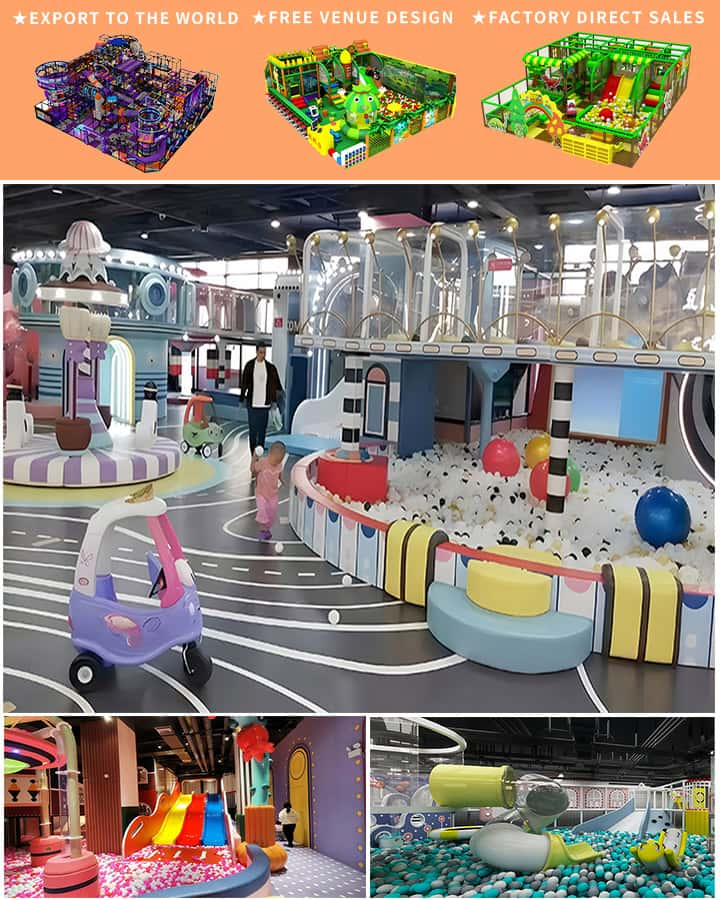Creating an engaging and safe indoor play area for kids can be a rewarding endeavor that fosters creativity, physical activity, and social interaction. Whether you’re designing a playroom in your home or a dedicated space within a community center, meticulous planning is key. Here’s an in-depth guide to help you craft the perfect indoor play area for children.
1. Define the Space
Before diving into specifics, it’s essential to evaluate the available space. Measure your room or designated area, taking note of dimensions, architectural features, and any potential hazards. The ideal play area should be spacious enough to accommodate various activities but also cozy enough to feel inviting.
2. Safety First
Kids’ safety is paramount. Ensure the space is free from sharp edges, electrical outlets, and choking hazards. Install soft flooring such as foam mats or rubber tiles to cushion falls. Secure heavy furniture and cover electrical sockets. Consider using child-proof locks on cabinets that contain harmful substances or objects.
3. Age-Appropriate Zones
Create age-specific zones within the play area. For toddlers, include soft play structures, sensory toys, and a small ball pit. Preschoolers might enjoy a mini climbing wall, interactive books, and simple puzzles. For older children, set up areas with building blocks, a chalkboard wall, and science kits to encourage STEM learning.

4. Engaging Themes
Incorporating themes can make the play area more captivating. Popular themes include pirate ships, jungle adventures, outer space, or underwater exploration. Use themed decorations, colors, and even costumes to immerse kids in their chosen world. This not only stimulates imagination but also provides a cohesive aesthetic.
5. Interactive Features
Integrate interactive elements to keep kids entertained and learning. Wall-mounted games, touch-sensitive panels, and digital tablets loaded with educational apps can be both fun and informative. Regularly rotate toys and activities to maintain novelty and prevent boredom.
6. Comfortable Seating and Storage
Provide comfortable seating options like bean bags, small chairs, or cushions arranged around a low table. This encourages quiet time activities such as reading or drawing. Adequate storage solutions are crucial for maintaining order. Use bins, shelves, and labeled containers to store toys, books, and craft materials neatly out of sight when not in use.
7. Lighting and Ventilation
Good lighting is essential for creating a vibrant atmosphere. Natural light is ideal, so if possible, position the play area near windows. Complement with soft, warm artificial lights to reduce eye strain. Proper ventilation is also vital to ensure fresh air circulates and minimize stuffiness.
8. Flexibility and Adaptability
Design the space to be flexible and adaptable as your child grows and their interests change. Modular furniture and adjustable shelving allow for easy reconfiguration. Regularly assess the play area and make updates as needed to continue meeting the needs and preferences of the children using it.
9. Incorporate Learning Opportunities
An excellent indoor play area balances fun with learning. Include educational tools like letters, numbers, maps, and science experiment kits. Incorporate role-playing areas with dress-up clothes and props to encourage pretend play, which is vital for cognitive and social development.
10. Parental Participation
Finally, remember to create areas where parents or guardians can comfortably supervise and participate. Comfortable seating, a coffee station, or a reading nook allows adults to engage actively in their child’s playtime, fostering bonding and ensuring safety.
Conclusion
Designing an optimal indoor play area involves thoughtful consideration of space, safety, engagement, and education. By integrating these elements, you can create a vibrant, stimulating environment that caters to kids’ diverse needs while providing a secure and nurturing space for growth and play. Happy planning!




